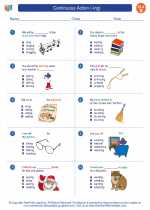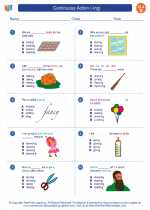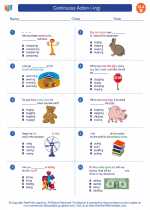Present Tense
The present tense is a grammatical tense that describes an action that is currently happening or a state that is currently true. In English, there are four forms of the present tense: simple present, present continuous, present perfect, and present perfect continuous.
Simple Present Tense
The simple present tense is used to describe routine actions, general truths, and states of being. It is formed by using the base form of the verb.
Example: She plays the piano every day.
Present Continuous Tense
The present continuous tense is used to describe actions that are happening at the moment of speaking or around the current time. It is formed by using the present tense of the verb "to be" and the present participle of the main verb.
Example: They are eating dinner right now.
Present Perfect Tense
The present perfect tense is used to describe past actions or experiences that have relevance to the present. It is formed by using the present tense of the verb "to have" and the past participle of the main verb.
Example: I have visited Paris several times.
Present Perfect Continuous Tense
The present perfect continuous tense is used to describe actions that started in the past and are still continuing or have just finished. It is formed by using the present perfect tense of the verb "to have" and the present participle of the main verb.
Example: She has been studying for the exam for two hours.
Study Guide
- Identify the action or state: Determine whether the sentence is describing an action that is happening now or a state that is currently true.
- Choose the appropriate present tense: Select the correct present tense form (simple present, present continuous, present perfect, or present perfect continuous) based on the context of the sentence.
- Conjugate the verb: Use the correct form of the verb based on the subject and the present tense chosen.
Practice using the present tense in different contexts to become more familiar with its usage and conjugation.
Remember to pay attention to signal words and phrases that indicate the use of the present tense, such as "now," "at the moment," "always," "often," "recently," and "lately."
Understanding the present tense is important for effectively communicating actions and states in the present time.
[Present Tense] Related Worksheets and Study Guides:
.◂English Language Arts Worksheets and Study Guides Second Grade. Continuous Action (-ing)

 Worksheet/Answer key
Worksheet/Answer key
 Worksheet/Answer key
Worksheet/Answer key
 Worksheet/Answer key
Worksheet/Answer key
